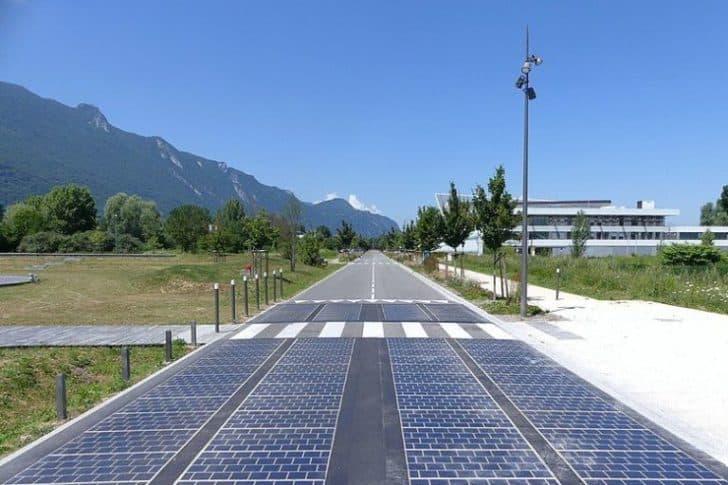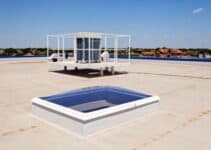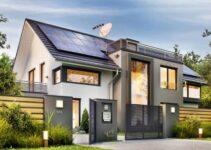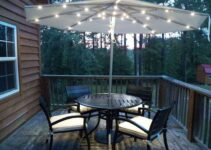Many people want to switch to solar power. Why? Because they believe that this is the wave of the future. The study, conducted by Ernst & Young, discovered that money was a key driving force for 70 percent of those who had already installed solar panels.
The cost of installation, however, was a major limiting factor. While Australia enjoys plentiful sunshine during the year, the costs for installing solar can be tens of thousands of dollars – more than most people can afford.
The survey also found that about 1 in 3 Australians had missed an electricity bill payment in the past 12 months, and more than one in 10 have missed more than three payments. In total, roughly 70 percent of Aussies are worried about being able to pay their electric bill every month. Rising electricity bills are cited as the primary reason for peoples’ fears.
1. Solar Power Is Growing
Australia has more than 1.2 million homes with solar panels installed on roofs, and with companies like Blue Star Energy offering solar feed-in tariffs (where the company pays you for any unused solar energy you generate), the attraction to solar is understandable.
Growth is expected to continue, despite the costs.
2. Home Owned Solar Panels
The cost of electricity remains high as the number of alternatives rises for homeowners; 19% of homeowners (and rising) now leverage solar panels or have solar water heaters.
Constant sunlight and the proliferation of vendors ensure a wider embrace throughout Australia. Tax breaks and government incentives entice even rural and low-income families to adopt solar panels. Actually, 40 percent of panels are installed in those regions.
3. Speed Cameras
This isn’t something most Aussies want to know, but speed cameras – the kind used to catch you if you’re speeding, are now able to make use of solar panels during the day to capture images of speeders.
Don’t fret, though. If you’re a safe driver, this just means safer roads for you. And, yes, they still work at night.
While the notion of ‘getting caught’ is not pleasant, the location of permanent cameras is published on police websites, reminding the public that cameras are serving as a means of better safety rather than a reason to produce more fines.
Radio announcements and even mobile apps that alert drivers of nearby cameras and speed traps, help Aussies avoid costly tickets as well as serves as a constant reminder to mind speed and keep roads safe.
4. Solar-Powered Rubbish Cans
Solar-powered rubbish bins will reduce the impact of trash in cities, reduce greenhouse gas emissions by 80 percent, and allow trash cans to collect more trash, by using solar-powered compactors to compact trash.
You may have already seen some of the trash compactors on the streets. They work similar to normal rubbish cans, but they incorporate a special compactor that compresses the trash to make room for more. It means that garbage trucks don’t have to run quite as often to pick up the trash, reducing the fuel used by garbage collection companies.
BigBelly, a supplier of cans in the United States, reports cans hold 80 % more waste and reduce related emissions by 80 percent. The bustling and urban city of Philadelphia replaced 700 cans with 500 solar cans, reducing weekly trips by garbage workers by two-thirds and saving the city 70 percent in costs.
5. Solar Stadiums
Taiwan’s National Stadium generates 100 percent of its electricity from solar – 8,844 solar panels power the track and field with 3,300 lux.
A growing number of American sports stadiums have followed suit, hosting solar panels, wind turbines, and natural gas generators. Solar alternatives inspire owners and field managers to invest in other methods of self-sufficiency and in the promotion of green methodology. Philadelphia, a ‘green city,’ aspires to host the first self-sufficient American football stadium.
Now that the cat is out of the bag, it is only a matter of time before Australian designers can also look at ways of using the sun’s energy in their stadium designs.
6. Solar-Powered Phones
New charging designs promise to charge your next smartphone, tablet, and possibly even computer using the sun’s energy. This would allow you to take your phone with you anywhere, without having to use any external plug to charge the device. The option for these charges is still limited, and major manufacturers don’t officially support them yet, but they’re on the horizon.
7. Solar Planes
Unbelievably, the solar industry has helped create the first solar-powered plane, which is composed of 12,000 solar panels. It can fly day and night and is currently undergoing test flights. Right now, it’s working towards a worldwide journey.
Solar planes can be used for other means other than transportation. Governments consider them for domestic and international surveillance, and communications companies, such as Google, ponder ways to use small planes, blimps, and floating devices to promote service and Internet use. A unique aspect, solar planes are shaped like flying rulers, with long wingspans and limited lengths.
Tyler Gascoigne is a retiree on a fixed budget and a solar energy enthusiast. When the weather won’t let him work outdoors, he likes to sit and share his insights with others. You can find his interesting articles on a variety of websites and blogs today.
8. Solar Garden
The Solar Garden concept is already is popular in the US but not yet explored in Australia. Solar gardens are solar arrays in which consumers can purchase a share, with the electricity generated credited to their power bills. Solar gardens make solar power available to those who cannot install their own solar PV panels, such as renters, apartment dwellers, low-income households or those restricted by issues such as roof orientation, heritage listing or structural concerns.
Now, the Institute of Sustainable Futures at the University of Technology Sydney and the Consumer Power Agency are running a feasibility study to explore the potential for solar gardens to be introduced in Australia. The $550,000 feasibility study will be trialed at five locations in Blacktown in western Sydney, Shoalhaven on the New South Wale’s south coast and Byron Bay, Swan Hill in north-western Victoria and Townsville in Far North Queensland.
This will be the first initiative of its kind to involve Australian customers who are also investors, receiving their returns through savings on their electricity bills. On behalf of the Australian Government, ARENA is contributing $215,000 to fund the study, which will also involve councils, energy retailers, welfare organizations and community power agencies.
9. Solar PV
This is the process of converting sunlight into electricity using PV systems that produce zero greenhouse gas emissions. Solar panels capture the energy of sunlight, which is converted into electricity. This is known as a photovoltaic system, usually called solar PV. Excess electricity can be directed into the grid, delivering a feed-in payment, or it can be stored in a rechargeable battery for later use. Batteries can also provide back-up power in the event of blackouts.
The cost of a home solar PV system starts at around $3500 for a basic installation. Prices are steadily coming down as demand and mass-production increase. Solar PV is intended to be an investment that, once paid for, will save its owner money by generating free electricity during daylight hours. A system without batteries typically has a payback period of 3 to 5 years. Adding batteries extends the payback period.
A solar PV and battery system offers the potential of off-grid energy self-sufficiency. It’s also a major step in the transition away from fossil fuels.
10. Solar Inverters
Solar inverters are an essential component of a solar PV system. They convert the direct current (DC) output of solar panels into alternating current (AC) electricity for use in the home. Inverters can be monitored via a computer program or device app to check energy generation, consumption and correct operation of the system.
String inverters are the most common type for households, generally ranging from 1.5 to 5kW. They are a single unit connected to a ‘string’ of solar panels. More than one string inverter will be required for larger panel set-ups. String inverter warranties are generally 5 to 10 years and should cover parts and labor.
Microinverters are smaller individual units that are installed on a rack or attached to each panel, ranging from 200 to 250W each. They are ideal where regular intermittent shading of panels is unavoidable due to trees or other buildings. Warranties for micro inverters tend to be 10 to 25 years; 10 years when they are racked, and 25 years when attached to the panel directly.
Battery-only inverters are used to retrofit a battery-only inverter to complement an existing string or micro-inverter solar PV system. A battery inverter captures the surplus electrical energy to store for later use.
Hybrid inverters perform the combined function of a string inverter and battery inverter in a single unit. A hybrid inverter can be installed and used before batteries are in place, making it a good option for an expandable system.
11. Solar Batteries
Rechargeable solar batteries store the ‘excess’ electricity generated from a panel array, boosting energy capacity and making power available for use at night time or on cloudy days. Recent design improvements and price drops in lithium-ion batteries have made solar storage more viable than ever before. If all the appliances in your home are electrical, they can be powered by solar.
However, battery storage systems are a serious safety risk if incorrectly installed and may have implications for insurance coverage.






